by Penny Pawl, UC Master Gardener of Napa County
Because of the drought, I am trying French intensive gardening (also known as small-space gardening or square-foot gardening) this year. Rather than spread my vegetables out, I am using the French intensive method to save water.
When I first became a Master Gardener, one of the veteran members was using this method and it seemed to work well for her. She had laid out a grid in her garden and placed different plants within each grid. I have not been that precise, but I have reduced the space between the plants.
If you learn a little about these methods, you may be interested in trying them, too.
French intensive gardening originated around five centuries ago in Paris. It was known as “market gardening” then, a term for growing a variety of marketable crops in small plots. The gardeners would take their crops to the local market to sell them. They practiced companion planting—growing synergistic plants together to improve yield or pest resistance.
They also understood that they could warm the soil by adding fermented manure. Two French gardeners wrote a book on this method in 1845. Titled Manuel pratique de la culture maraîchère de Paris, it is still available on Amazon, updated for modern times.
The French intensive method was popular in England by 1900. Books about it were written in English and the ideas became popular in the late 1960s in the United States. A demonstration garden showcasing French intensive methods was built at UC Santa Cruz.
One advantage of such close-spaced planting is that the leaves of large plants will eventually touch, and more tender plants can be cultivated underneath them. My neighbor has planted lettuce between his tomatoes.
I found online a list of reasons to consider French intensive methods. The one I like best is that it uses less space for a given yield than many other methods. I hope I can confirm that by the end of this growing season.
In my garden this year, I planted tomatoes in square cages, leaving the width of a cage between them. In those areas, I planted broccoli and marigolds. I planted cucumbers inside the tomato cages so they could climb. As they grow, the tomatoes will produce a shady area behind them that I can plant to crops that don't need as much light.
On the recommendation of the owner of Sonoma Worm Farm, I added a couple of tablespoons of worm compost to each hole prior to planting. Most store-bought compost is primarily a soil conditioner; worm compost is a mild fertilizer. I also sprinkle it around the plants and find it benefits all of them.
Many French-intensive gardeners use a technique called intercropping—planting together two plants with different needs. For example, you might group a deep-rooted plant with a shallow-rooted crop. To do intercropping successfully, you must study the needs of the plants and create a plan. Prior to planting this year, I spent a great deal of time just planning the bed and figuring out where I would place the plants.
Marigolds can do great things for a garden. They have a strong fragrance that attracts insects that might attack your edible crops instead. I have used them as a decoy successfully for a few years. This method is called trap cropping or companion planting.
If you would like to know more about French intensive gardening techniques, you can find many books online about it.
Food Growing Forum: Napa CountyMaster Gardeners will present a discussion of “Pests in the Summer Garden” on Sunday, July 11, from 3 p.m. to 4 p.m., via Zoom. Register here to receive the Zoom link: http://ucanr.edu/2021FoodForumJuly
Free Guided Tree Walk: Join Master Gardeners of Napa County for a tree walk in Fuller Park in Napa on Tuesday, July 13, from 10 a.m. to noon. Limited to 12 people per walk. COVID safety protocols will be followed. You will be asked health questions and asked to sign in. Face masks and social distancing are required. Register here.
Workshop: Napa County Master Gardeners will conduct a workshop on “The Art of Growing Succulents” on Saturday, July 17, from 10 a.m to noon, via Zoom. Learn how to care for these unique, colorful and unthirsty members of the plant community. Reserve here: http://ucanr.edu/2021SucculentsJuly
Got Garden Questions? Contact our Help Desk. The team is working remotely so please submit your questions through our diagnosis form, sending any photos to mastergardeners@countyofnapa.org or leave a detailed message at 707- 253-4143. A Master Gardener will get back to you by phone or email.
For more information visit http://napamg.ucanr.edu or find us on Facebook or Instagram, UC Master Gardeners of Napa County.
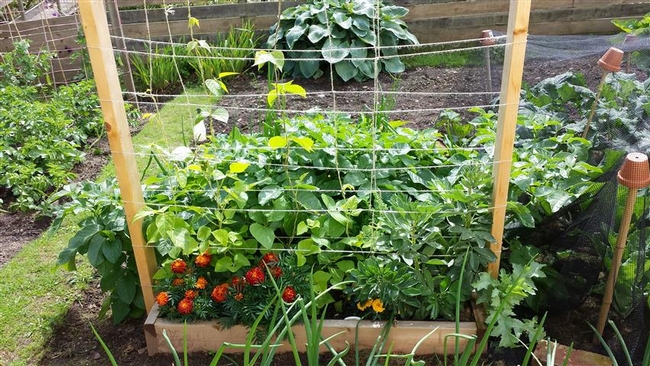

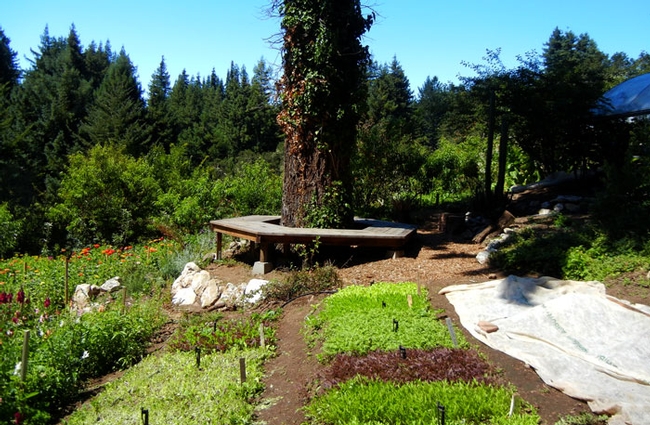
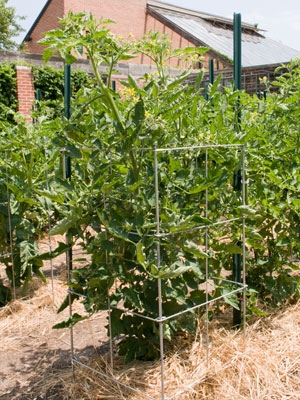
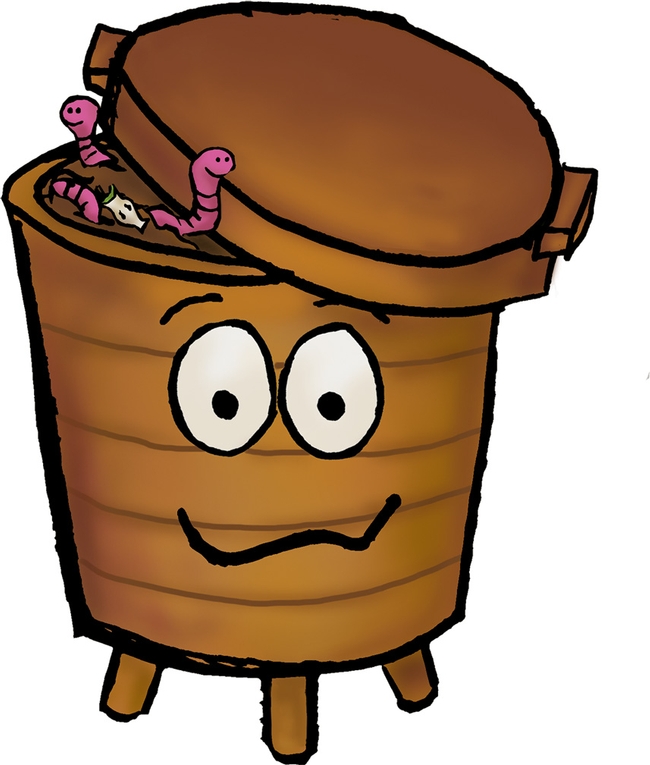

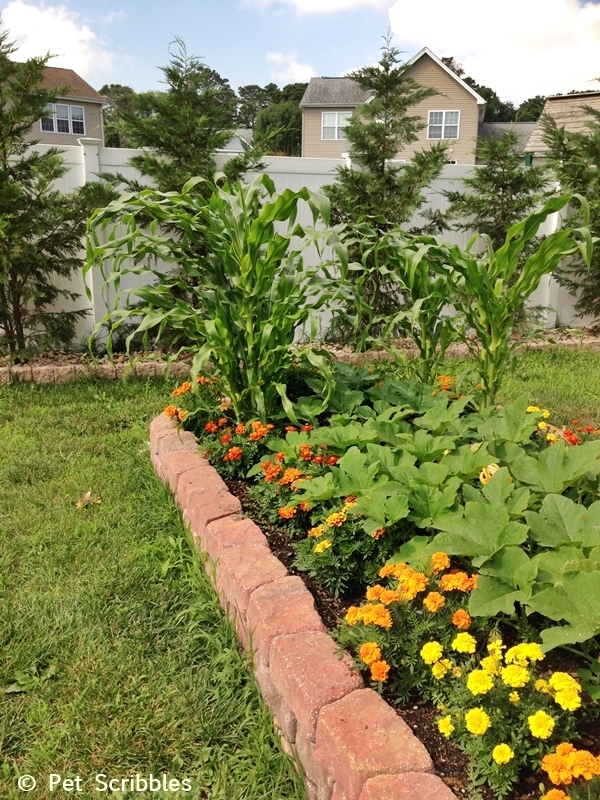
By Penny Pawl, U. C. Master Gardener of Napa County
Winter is a perfect time to start planning the pollinator garden you will create in the spring. Start by deciding just where you would like to put the garden. Some people have taken out the center of their lawn and created a space for a garden for pollinators.
Pollinators are extremely important to the global ecosystem. Without them, many people would starve because food plants would not get pollinated. You can help by making an area in your garden hospitable to them.
Last fall, I picked out an area in my garden and decided to line it with hardware cloth because gophers had started to pull down my precious milkweeds. I dug up those milkweeds, then a helper laid wire over the soil and used building blocks to hold the wire in place. Over the winter, my helper added various soils and compost to create an area where the plants would grow. Soil was added to the openings in the building blocks.
Meanwhile, I was researching the plants that bees, birds and butterflies love. These plants have to be full of nectar as some pollinators need nectar for daily food and others need it to store in their nests.
I especially wanted to add nectars that would attract bumblebees. I have always had bumblebees in summer, but for some unknown reason, they disappeared the previous July. This year, I found the queen feeding on purple salvia in October. The queen is much bigger than the workers and usually stays in the nest while the workers gather nectar.
My next step was to start buying seeds of the plants I wanted. As soon as the weather warmed a bit, I started the seedlings in my hothouse. I had learned that marigolds, zinnias and salvias were pollinator favorites. For me, there is nothing more enjoyable than settling down on a long winter night with a stack of seed catalogs. Our bees, butterflies and birds evolved with California native plants, so that's what I chose.
Once you determine where you want your pollinator garden you can start to prepare the area for planting. Add a mixture of compost and soil. Let these two elements mix over winter, giving ground worms and small insects a chance to start working. Ground worms sift the soil through their gut and make tunnels for water to move through.
I found that bumblebees especially love ‘Hot Lips' salvia from Mexico. They drill a hole in the back of the flower to get directly to the nectar. Honeybees also visit my garden because there are hives nearby and some of them nap for the night in the flowers.
Native bees are small and often nest in the ground or in holes in trees and other wood. They visit my garden often for nectar.
Monarch butterflies need native milkweed to raise new generations so I grow two or three different native milkweeds in my pollinator bed. Some milkweeds come back from the roots, so you plant once and they continue to produce.
Sunflowers are always a good choice. I experimented with a Mexican sunflower with small flowers using seeds I bought online. Birds and squirrels are especially fond of sunflowers so plant a variety. I added more flowering plants to the mix, and as the flowers formed seeds, I plucked them and saved the seed.
Before I planted anything, I had a one gallon-per-hour drip line laid in the bed. Once plants got established, I watered once a week. Native plants don't require a lot of water, so that schedule was sufficient. For fertilizer, I used sifted worm compost which has all the trace elements plants need.
Above all, make your pollinator garden your own creation, with plants that you love and that they will, too. The pollinators will be grateful.
Next workshop: “Citrus: Preserve It, Serve It” on Thursday, January 16, from 1 p.m. to 4 p.m., at the University of California Cooperative Extension, 1710 Soscol Avenue, Napa. Presented by UC Master Food Preservers. For more details and online registration call 707-253-4221 or visit http://napamg.ucanr.edu.
The UC Master Gardeners of Napa County are volunteers who provide UC research-based information on home gardening and answer your questions. To find out more about upcoming programs or to ask a garden question, visit the Master Gardener website (http://napamg.ucanr.edu) or call (707) 253-4221 between 9 a.m. and noon on Mondays, Wednesdays or Fridays.
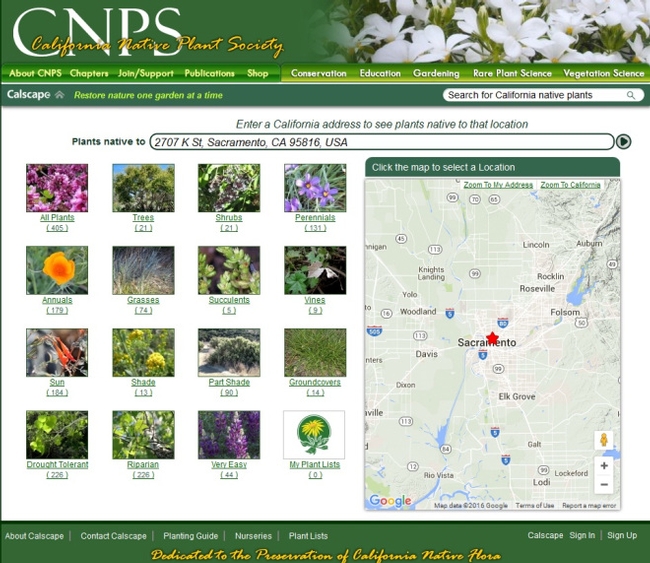
By Penny Pawl, UC Master Gardener of Napa County
This past November, I went to Oaxaca to celebrate the Day of the Dead. The experience was unique in many ways and I enjoyed it very much. The parades, the music, the food and especially the flowers really delighted me. Most of the flowers used were marigolds. Until this trip, I was not aware how many different varieties there are of this New World flower species (Tagetes).
Another flower used in the Day of the Dead festivities was cockscomb (Celosia cristata). Many other blooming flowers were used in the decorations, adding to the feeling of rebirth.
My fellow travelers and I helped to build alters and decorate graves which was a wonderful experience. We visited pottery makers who practice traditional methods and went to ancient ruins in the area. There were several festive parades, and everyone took part even if they were not dressed for the occasion.
Day of the Dead celebrants believe that marigolds, with their bright golden colors, guide the spirits to the altars and places where relatives await. Varieties have been bred to be bigger and grander for this journey. After dark in the graveyard, candles were lit around each grave. The candlelight with the golden flowers was beautiful.
We used several varieties of marigolds when decorating the altar and arch. The plants still had roots attached as they had been pulled from the ground rather than cut to keep them fresh longer. We used both whole flowers and petals. For the arch, the marigolds were tied in place, and for the rest of the decoration, the flowers were laid on the altar.
Fruits, vegetables, sugar cane and decorated breads were added to the altars. Beautiful candles were also part of the decorations. Small burners were lit to lead the way.
As we moved around the countryside, we saw fields of wild marigolds everywhere. We also saw truckloads of flowers in route to the city for use in the celebrations.
While marigolds originate in the New World, explorers took them back to Europe so now there are French marigolds and African marigolds developed from the originals. Marigolds have also been used in folk medicine from ancient times. They have been used in tea and in skin treatments. I even noticed that they were fried and added to salads. Marigolds are also said to repel mosquitoes.
The French marigold varieties are relatively short and usually bloom in about eight weeks. African marigolds are taller and take longer to bloom. Plant a few of each for variety in flower color and size.
Perusing a garden catalog, I was amazed by the all the colors that marigolds come in. They vary from creamy white to very deep orange, with many combinations in between.
I have been reading a great deal about the marigold family and don't know how much of what I read is folklore and how much is fact. Some garden catalogs say that marigolds combat nematodes, and others say they repel most harmful insects. I plan to include them in my vegetable garden and flower beds to see how successful these plants are.
The seeds usually germinate within a week. You can sow them as soon as the ground warms in spring or start them indoors and pot up the seedlings. Move them to larger containers as they grow to give the roots plenty of room and insure that will be big when you are ready to plant them in the garden.
At planting time, dig a hole, add a tablespoon or so of worm compost and place the marigold into the hole. Press the soil into place and water well. Keep the soil moist until the plants are established. With care you will have flowers from summer to fall. Remove spent flowers to encourage new ones to grow.
Workshops: U. C. Master Gardeners of Napa County will conduct 2 January workshops:
"Rose Pruning" on Saturday, January 5 from 10-12 noon at the UCCE Meeting room, 1710 Soscol Ave, Napa. Get all your Rose pruning questions answered at this interactive workshop. Topics include rose types, how and when to prune, what tools to use along with tool care, safety, and sanitation. For registration Online Registration (credit card only) or Mail-in/Walk-in registration (check only or drop off cash payment).
“How to Plan and Plant a Home Vineyard” on Saturday, January 12, from 9 a.m. to 1 p.m., in Yountville. Join our Integrated Grape Team members to learn techniques for planning and planting a home vineyard. The workshop will be held at a new home vineyard planted last year. Learn the necessary planning steps, become familiar with the checklist of activities, methods of determining the proper rootstock, selection of wine grape varietals for specific locations and estimated yield calculations. Review our calendar timeline for planning, site preparation, initial planting and timing of the first harvest for a new home vineyard. Online registration (credit card only); Mail-in/Walk-in registration (check only or drop off cash payment).
Master Gardeners are volunteers who help the University of California reach the gardening public with home gardening information. U. C. Master Gardeners of Napa County (http:/napamg.ucanr.edu) ) are available to answer gardening questions in person or by phone, Monday, Wednesday and Friday, 9 a.m. to Noon, at the U. C. Cooperative Extension office, 1710 Soscol Avenue, Suite 4, Napa, 707-253-4143, or from outside City of Napa toll-free at 877-279-3065. Or e-mail your garden questions by following the guidelines on our web site. Click on Napa, then on Have Garden Questions? Find us on Facebook under UC Master Gardeners of Napa County.

It is surprising to me today how many of these counsels have remained in my recollections. One in particular, concerning the importance of patience, has had a lasting effect on my life:
Patience is a virtue
Catch if you can
Seldom in a woman
But never in a man.
The fact that this homily had a gender bias probably added to the attraction for my mother.
I am the very model of a patient gardener. I realized many years ago that you can’t rush things in your garden. A seed may take what seems like forever to germinate. Many fruit trees relax for three years or so before fulfilling their fruiting mission. Patience is also required when dealing with those slimy visitors that regard our carefully cultivated plants as a banquet.
I’ve had some moments of trauma on this front. On one occasion I purchased a flat of beautiful marigolds. I planted them in my garden, looked admiringly at them, smiled a well-pleased kind of smile and then retired to dream.
The next next morning, my first mission was to visit my baby marigolds: how had they fared on their first night? Had they survived the creatures moving around in the darkness?
Lighthearted and expecting a joyful scenario, I approached the marigold bed. Expectant joy turned to eye-popping horror. Gone. Vanished. Nary a petal to be seen. Was this some kind of horrifying chimera? Had thieves in the night come and abducted my neonates? Had some malicious being spirited them away?
I immediately identified with the image of a desolate Silas Marner when he discovered that his gold hoard had been stolen. His gold coins were as children to him. He loved them. Their disappearance was a devastating trauma. He put his trembling hands to his head, and gave a wild ringing scream, the cry of desolation.
I didn’t scream or cry but I allowed thoughts of vengeance to grow in my gardener’s heart. On the night after this shocking discovery, armed with a powerful flashlight, I patrolled my flower beds. The perpetrators were sashaying in extraordinary numbers all over my garden.
With violence in my heart I eliminated that night’s promenaders, dozens of them. Night after night, patiently and methodically, my process of decimation continued until I knew the most fragile of flowers would be safe in my garden, day or night. Since that time, it has been my practice to patrol my garden for a number of nights at the beginning of each planting season to ensure a snail-free environment for my vulnerable seedlings and buds. This effort requires a little patience, but patience is more effective than snail bait. I have not seen a snail in my garden for several years.
Master Gardeners are volunteers who help the University of California reach the gardening public with home gardening information. Napa County Master Gardeners (http://ucanr.org/ucmgnapa) are available to answer gardening questions in person or by phone, Monday, Wednesday and Friday, 9 a.m. to Noon, at the U. C. Cooperative Extension office, 1710 Soscol Avenue, Suite 4, Napa, 707-253-4143, or from outside City of Napa toll-free at 877-279-3065. Or e-mail your garden questions by following the guidelines on our web site. Click on Napa, then on Have Garden Questions?
I bet that if you are reading this column you have already eaten edible flowers. Artichokes, broccoli and cauliflower—all common California-grown vegetables—are actually immature flowers. Perhaps you have tasted nasturtiums, a spicy addition to salads, or a favorite cook has prepared stuffed squash blossoms for you.
Many common flowers are edible. Growing some in your vegetable patch can brighten your meals as well as your garden.
Many plants produce edible flowers. I discovered a comprehensive list on Colorado State University Extension's web site (www.ext.colostate.edu). A short list of edible flowers includes roses, daylilies, most perennial herb blossoms and chrysanthemums. As these plants are not generally grown in the vegetable patch, I am going to suggest some easy-to-grow edible flowers that you can include among your vegetable.
Before eating any flower, be sure you know what it is. A number of common garden plants have toxic flowers that should not be eaten. When eating a flower for the first time, you may not know if you or your guests will have an allergic reaction to the new food. Introduce new flowers in small doses.
Note that a flower may be edible but not tasty. This is especially true of plants that have many varieties, such as roses. All rose petals are edible, but some taste better than others.
March is a great time to add cool-season flowers to the vegetable patch. Nasturtiums are annuals that grow best from seed and flourish in our spring weather. Sow them now in average soil; if the soil is too rich they won't bloom. Keep them well-watered. When the weather gets hot, they do better in some shade and may stop growing. Both leaves and flowers are edible. The types with variegated leaves are particularly attractive in salads.
Calendulas are also easy to start from seed and have done well in my garden with little attention. Even during summer, some plants usually survive and bloom. Because this plant self-sows readily, I have had continuous plants in my garden for several years. Only the petals are edible. Use them as a confetti-like garnish for salads, frittatas and rice dishes.
Violas, pansies and Johnny-jump-ups are wonderful cool-weather edible flowers. They come in a large variety of colors and color combinations, and nurseries carry many types for transplanting in early spring. Plant them in moist, rich soil and partial shade. They will tolerate light frosts; I have had good luck growing them in winter. When the weather gets hot they will fade away. Their flavor is mild, but they add great visual appeal to desserts and salads.
When the weather turns warm, try some flowers that can take the heat. Marigolds are edible but many do not taste very good. However, the Signet marigold (Tagetes signata), also known as Gem marigold, has tasty, citrus-flavored flowers. Some named varieties are ‘Lemon Gem,' ‘Tangerine Gem' and ‘Red Gem.'
You will likely need to start these marigolds from seed, as transplants are not always available. Start seeds now in a pot for transplanting in late April or May, or wait until the soil is warm and start them directly in the ground. The plant grows into a one-foot-tall mound covered with half-inch to one-inch flowers. Give it ordinary garden soil, full sun and adequate water, and it will bloom well into fall. I think the lemony flavor of the blossoms complements fish dishes, and I have used the flowers to garnish tomato platters and lemon cookies.
Another summer plant to try in the cooler parts of the Napa Valley is runner beans. A relative of snap beans, runner beans have much showier blossoms with a mild beany taste. Most varieties are vining types and should be grown on some kind of trellis. Plant from seed in full sun after the soil warms. The plants will produce flowers and beans in a couple of months. As long the temperatures stay in the 80s, they will thrive. Because of their crunchy texture, the blossoms are great to top soups and as a garnish for bean dishes.
Once you start using flowers in your food, don't be surprised if your guests start taking pictures. Your edible flowers will turn an ordinary dish into an extraordinarily beautiful one.
Master Gardeners are volunteers who help the University of California reach the gardening public with home gardening information. Napa County Master Gardeners (http://napamg.ucanr.edu) are available to answer gardening questions in person or by phone, Monday, Wednesday and Friday, 9 a.m. to Noon, at the U. C. Cooperative Extension office, 1710 Soscol Avenue, Suite 4, Napa, 707-253-4143, or from outside City of Napa toll-free at 877-279-3065. Or e-mail your garden questions by following the guidelines on our web site. Click on top navigation - Garden Questions?

